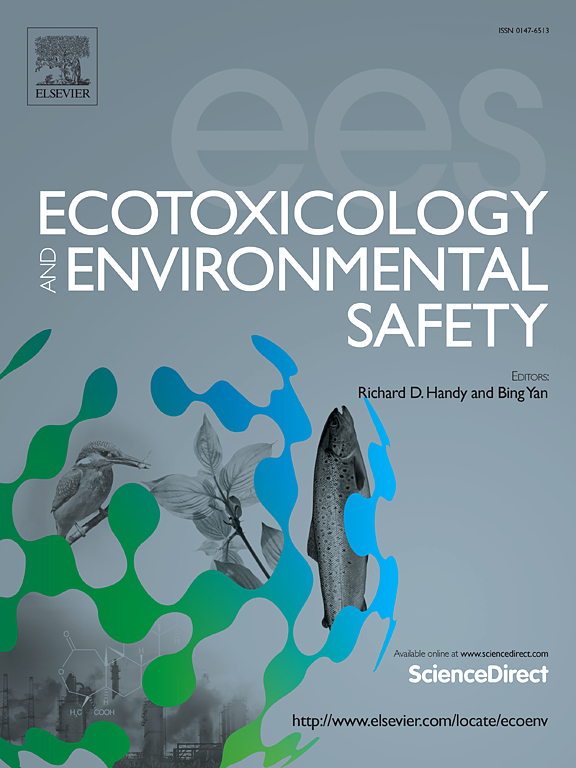Eco-safe potential of FITC-tagged nFeO in enhancing alfalfa-rhizobia symbiosis and salt stress tolerance via physicochemical and ultrastructural modifications
IF 6.2
2区 环境科学与生态学
Q1 ENVIRONMENTAL SCIENCES
引用次数: 0
Abstract
Salt stress severely limits global crop productivity by disrupting ionic balance, physiological processes, and cellular ultrastructure, particularly in salt-sensitive forages like alfalfa (Medicago sativa L). Addressing this issue requires environmentally feasible and innovative strategies. This study investigated the comparative potential of Nano-FeO and FeSO4 (30 mg kg−1) soil supplements with rhizobium on alfalfa salt tolerance employing morphological, physicochemical, and cellular approaches. The results demonstrated that FITC-nFeO and rhizobium significantly reduced Na+ uptake, enhanced K+ accumulation, and improved the Na+/K+ ratio in alfalfa roots and shoots relative to FeSO4. Scanning electron microscopy illustrated that FITC-nFeO ameliorated root ultracellular structure and leaf stomatal functionality, facilitating improved gaseous exchange characteristics and photosynthetic performance. Confocal laser scanning microscopy confirmed FITC-tagged nFeO adhesion to roots, supported by transmission electron microscopy findings of preserved chloroplast ultrastructure under FITC-nFeO and rhizobium application. FITC-nFeO also mitigated oxidative damage of ROS, as evidenced by reduced hydrogen peroxide, electrolyte leakage, and thiobarbituric acid reactive substances (TBARS) content, through enhanced antioxidant enzyme activities. Overall, in comparison to FeSO4, FITC-nFeO with rhizobium retrieved the salt-induced damages in alfalfa by promoting morpho-physiological and ultracellular integrity. This study highlights the role of nanotechnology in enhancing the resilience of forages on salt-contaminated soils, paving the way for eco-friendly remediation strategies.
求助全文
约1分钟内获得全文
求助全文
来源期刊
CiteScore
12.10
自引率
5.90%
发文量
1234
审稿时长
88 days
期刊介绍:
Ecotoxicology and Environmental Safety is a multi-disciplinary journal that focuses on understanding the exposure and effects of environmental contamination on organisms including human health. The scope of the journal covers three main themes. The topics within these themes, indicated below, include (but are not limited to) the following: Ecotoxicology、Environmental Chemistry、Environmental Safety etc.

 求助内容:
求助内容: 应助结果提醒方式:
应助结果提醒方式:


